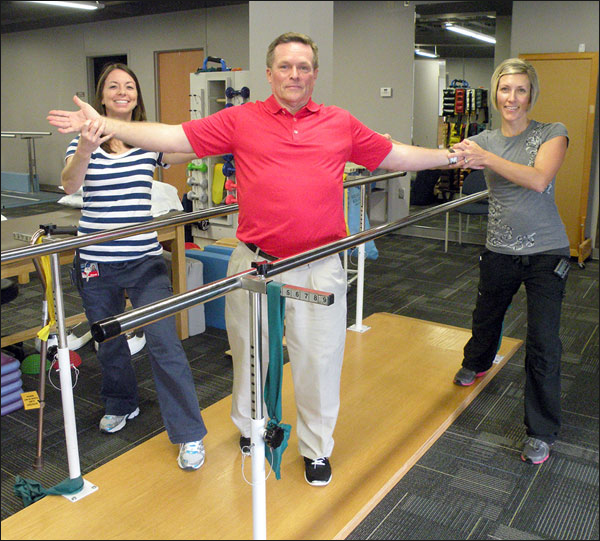
Am Fam Physician. 2015;92(7):568
My experience started with changes in the movement of my left leg. My stride shortened, and my left foot stuck to the sidewalk when I walked, as if glued with honey. My thighs felt heavy and weak, reminiscent of the 12 marathons I had run. I wondered what all of this could be at only 63 years of age.
The stiffness and slowness in my leg worsened. My back slumped forward, and my arms hung flexed at my side with scant swing. I lumbered awkwardly, like a gorilla plodding beneath a backpack of wet gravel. My handwriting shrank. A friend compared the symptoms with those of a stroke. Family members commented on my shuffling gait. A patient asked, “What's wrong with your legs?”
The clincher was the slow rhythmic tremor of my left thumb, which I first noticed during church. Was this really me? Rigidity? Bradykinesia? Postural disturbance? And now tremor? Could I really have Parkinson disease? Six months down the road: dread and denial, secrecy and silence. My long-term role as physician, husband, and father hung in limbo.
Finally, I consulted a neurologist specializing in movement disorders. Educational materials from the National Parkinson Foundation were quite encouraging. I became aware of physical and occupational therapies that incorporate stretching, dexterity, and balance exercises. I learned that deep brain implants can provide significant benefit, and that stem cell transplantation of fetal precursor neurons has the potential for functionally integrated and clinically relevant outcomes. I have enrolled in a large multicenter international double-blind research trial of a dopamine agonist. Perhaps new restorative horizons and firmer hope are around the corner. Just maybe, Parkinson disease's relentless neurodegeneration need not be so inevitable.—michael felz, md
Dr. Felz thanks Patrick H. Henry, MD, for his timely mentoring.

COMMENTARY
It is distressing to watch a colleague suffer, especially when illness progresses quickly. I have known Dr. Felz as a physician, teacher, backpacker, distance runner, and medical missionary to Papua New Guinea. His telltale slumped posture, shuffling gait, and slow motions of Parkinson disease seemed to age him right before my eyes. Thankfully, his response to physical therapy and medication has restored a good bit of his former velocity and amplitude of movement. As his family physician, I am delighted to watch as my colleague regains his trademark vim and vigor.
